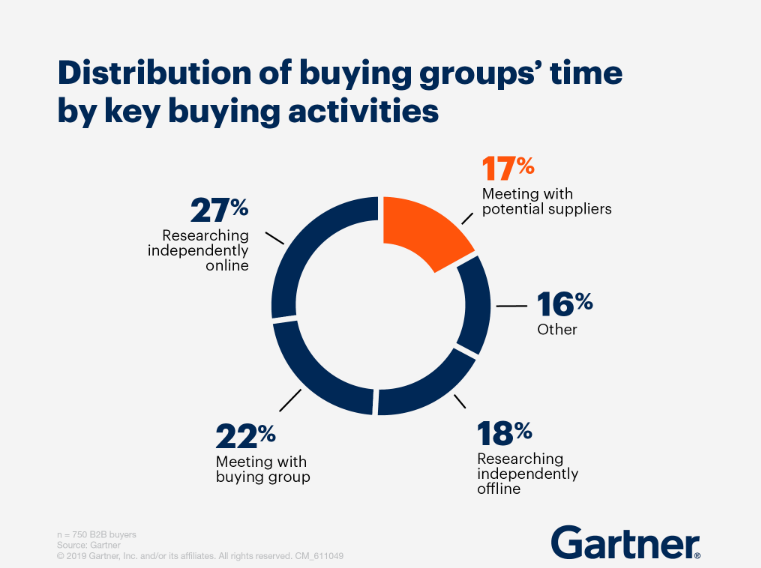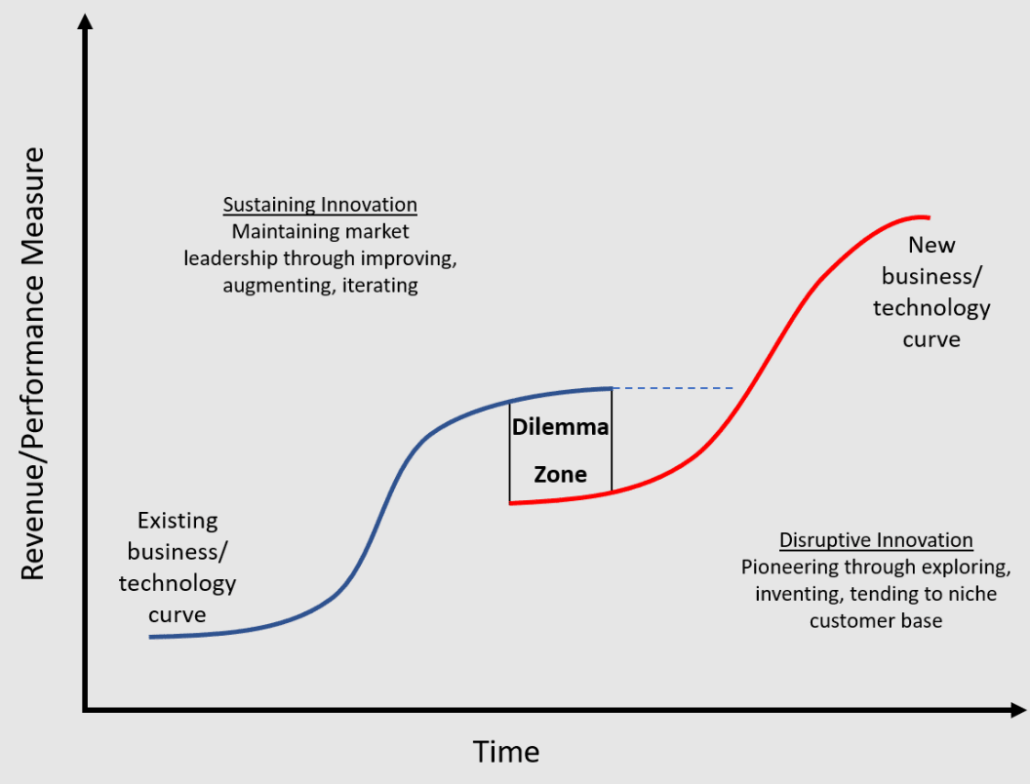(Disclaimer: This article is inspired by LinkedIn’s Sales Think Tank webinar, a platform dedicated to researching the future of sales organizations.)
The B2B sales process is getting tougher and tougher day by day. According to HubSpot, email response rates are down to 30%, and pavilion says that 68% of organizations reported missing sales targets just in July 2022. What about the B2B sales process? Do you think it needs improvement?
Yes, of course.
No matter how many years you have been working in sales, you make 100 calls a day, 10 will call you back, three will set up a meeting, and at the end of the day, you will close one deal. One thing that has changed in so many years is the customers. There is so much power in the hands of the customer these days, they are well-informed, and have far more information before even showing up.
Why should you care about your customers?
With access to more information than ever before, B2B customers are taking a more informed approach to their purchases and are becoming increasingly savvy. As a result, businesses must ensure they are providing the right products, services, and customer experience to meet the changing needs of their customers. In one of the Gartner research, it has been proven that the customer only invests 17% of the time with the seller while planning a purchase.

Moreover, studies from Gartner and CAB say that, on average, 60% of the buyer’s journey has already been completed before the customer even reaches out to your company. This means that, as sellers, we must bring more value to the table than ever before. If we don’t, it could come across as spam or a waste of the customer’s time.
Sellers must research, understand the customer’s specific pains and goals, and be able to show how their products or services can help them be successful. It’s not about hitting quotas; it’s about helping customers achieve success.
The new reality of B2B sales process
The sales leader’s dilemma is a difficult one; how to grow the business without sacrificing the customer experience. The sales leader must balance the need for increased sales and revenue with the need to maintain a positive customer experience. They must also be mindful of their team’s morale, as they are the ones responsible for delivering on the customer’s expectations. It is a delicate balancing act that requires careful consideration and communication in order to reach the desired outcome.
This challenge, inspired by Clayton Christensen’s Innovator’s Dilemma, has been an issue for many years now, and yet, despite advancements in technology, the percentage of sellers hitting their quota remains stagnant.
The Innovator’s Dilemma outlines the importance of developing a strategy for managing disruptive technologies and suggests that companies should invest in them early, even if the returns are uncertain. Christensen also outlines a number of strategies for managing such disruptions, such as investing in a portfolio of small-scale projects, focusing on customer needs, and entering new markets.
Leaders are caught between the need to achieve short-term goals and the need to plan for the future, and there’s often not enough time for both. It’s a true dilemma and one that has been around for a long time.

How to overcome B2B sales process challenges
Organizations often struggle to streamline the customer experience. With multiple sales roles such as SDRs, BDRs, and AEs, it can be difficult to create a sense of unity and a single selling motion.
#1 Bring your sales teams together
It’s important to identify outdated practices and look for creative ways to bring the sales team together. For example, how can BDRs, SDRs, and AEs can be combined to form a single, cohesive unit, without being managed by different departments? It’s a challenge that needs to be addressed, in order to ensure the best possible customer experience.
#2 Don’t get lost in buzzwords
Rather than focusing on asset control and headcount, why not take a step back to focus on the customer? What do they need from us and how can we make the process easier for them as well as our people? Instead of getting lost in the buzzwords of ‘seamless’, ‘automated’, and ‘predictive’, look at the customer’s journey and assess what’s required at each stage to make it as smooth and satisfying as possible. Combining this customer-centered approach with productivity and resource control is the way to go.
#3 Observe and improve
By launching a pop-up team, companies can experiment and learn what works best for them. This team could then be used as a testing ground to see if processes can be improved or if the tech stack needs to be altered.
It is important to observe the team in a real-world environment, and then use the results to refine the approach. Once it is close to perfect, it can be released to the public, and the impact monitored. However, never become complacent, remain a student of the situation, and always ask if the decisions taken are still relevant.
Should B2B businesses look for new skills from the sellers?
In today’s economy, B2B businesses must proactively look for new skills from their sellers, and managers must take the initiative to help. To keep up with the rapid changes in the marketplace, B2B businesses must stay ahead of the curve by finding and utilizing new skills to increase their competitive advantage.
Managers, sales reps, and sales leaders must look inward and invest in their own education, as well as the hires they make. This is especially true, as according to Bain, an astonishing 46% of sales reps would pay $1 for an hour of their manager’s time.
Managers must ensure they have the skills to effectively coach and mentor their team and understand the changing digital landscape. By asking questions about the CRM system and teaching them how to use it, they can develop the necessary skills to help their people—like video communication—and remain competitive in the market.
Managers can also help by providing training and development opportunities for the sellers. This will help the sellers to learn new skills and stay up to date on the latest trends and developments in the industry. Additionally, they should provide incentives for sellers to stay motivated and engaged in their roles, such as offering bonuses or additional incentives for meeting their sales goals.
Balancing team performance and individual development
Mike Bosworth’s research found that 15-17% of selling organizations are made up of top performers, 65% are B performers, and the rest are C performers. These top performers don’t just excel in hitting their quota, but also have soft skills like being able to work a room and build relationships.
The challenge that many organizations face is trying to make every one of their employees a top performer. It’s important to remember that everyone has their own strengths, and not everyone should be expected to excel in the same way.
Individual coaching and mentoring are key to finding what works best for each person and leads to success. Research should be done to ensure everyone is prepared but allowing individuals to find what works for them is also important.
I am a fan of anything that helps sales reps become better at their craft and advises sellers to become a student of their profession and use technology to research in an automated and efficient way. They emphasize that in complex selling environments, the ability to know the customer’s needs is essential and cannot be faked, otherwise customers will not return.
Tiffani Bova, Global Growth and Innovation Evangelist, Salesforce
What is tech stack, and where should it be headed?
Tech stack is a set of technologies and tools that are used to create a product or service. It includes both front-end and back-end elements such as programming languages, frameworks, databases, and other tools.
As technology continues to evolve, the tech stack must also move forward in order to keep up with the changing demands of users.
There is a plethora of ways to come up with solutions for the tech problems we face. But the main thing to keep in mind is if the tech is actually adding value to the customer and making the sales rep’s job easier.
“I’m all about optimizing the tech stack and reassessing it often to make sure everything is necessary. Too much technology can be a massive issue for sellers, leading to poor adoption and logins, which can be due to too much for them to navigate through, or the disconnection between the various technologies.”
Tiffani Bova, Global Growth and Innovation Evangelist, Salesforce
In the B2B sales process integrating the various elements of the stack is a key element of success as the average enterprise has 927 unique applications and only 30% of them are integrated. This lack of integration leads to customer data being scattered across multiple sources, making it difficult to provide a consistent and seamless experience. Without integration, sales reps are unable to work efficiently, and organizations struggle to achieve the scale they desire.
LeadSquared is a comprehensive lead management and marketing automation platform designed to help B2B businesses drive more sales and increase customer success.
To know more about how LeadSquared can help you achieve your desired sales goals, book a demo with us today!









